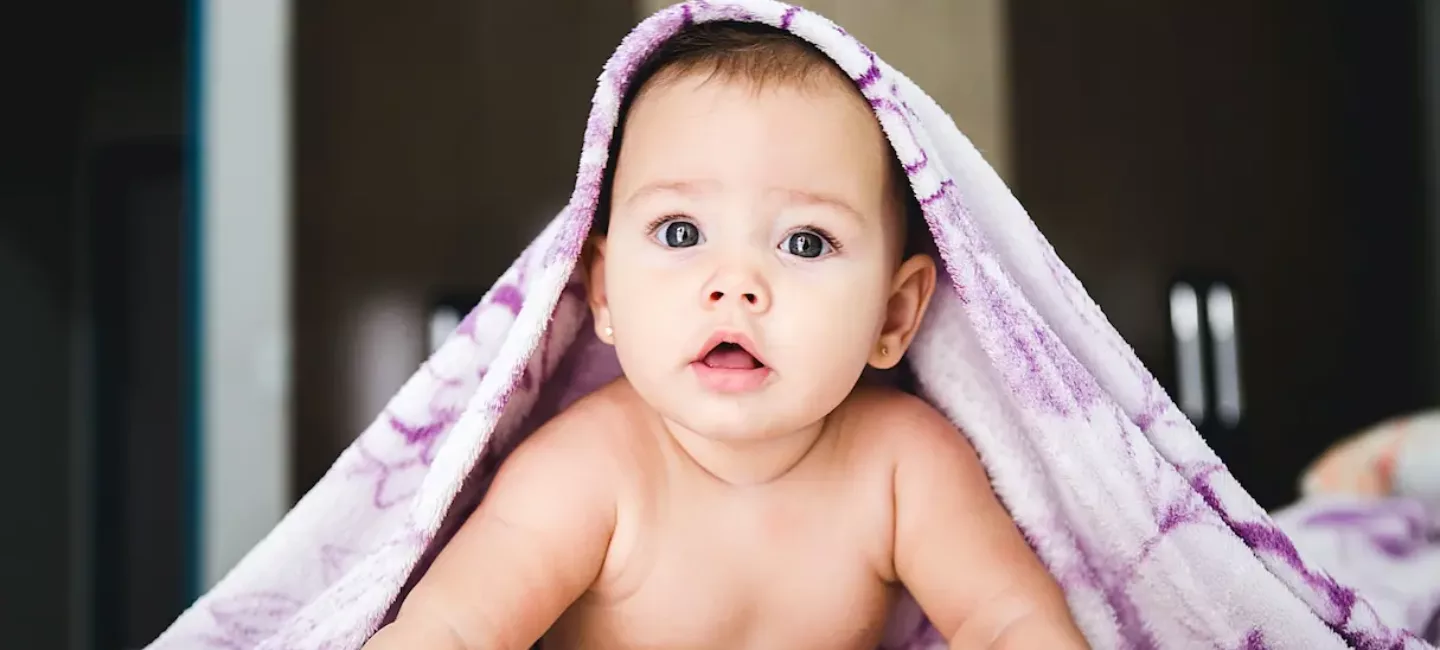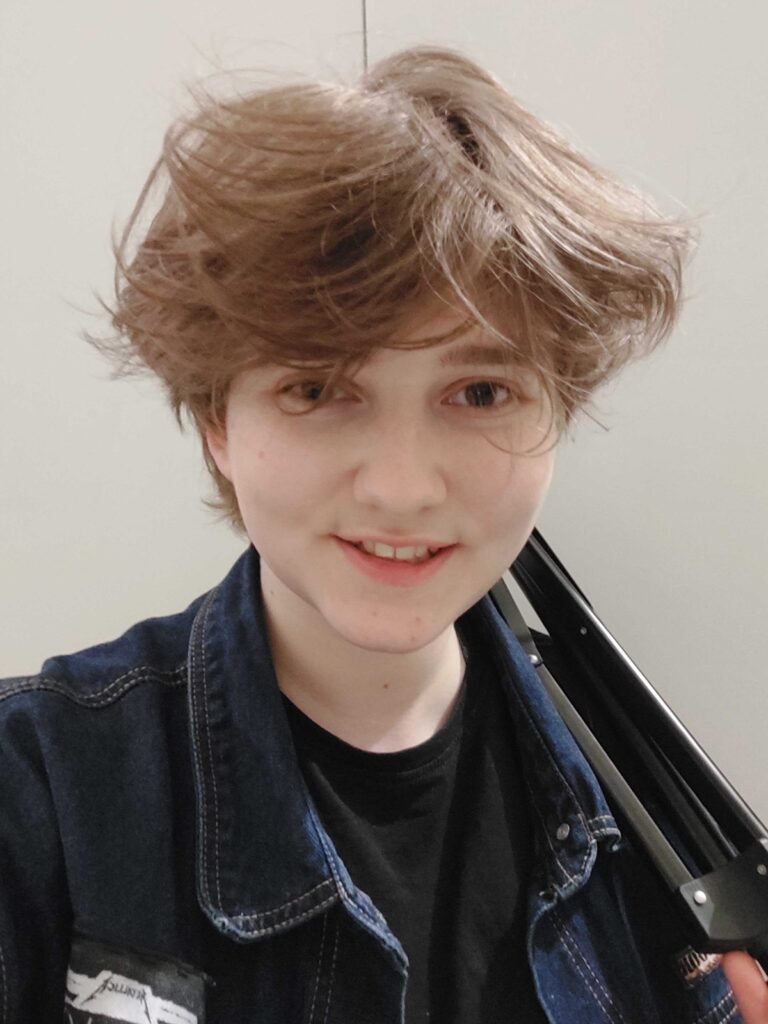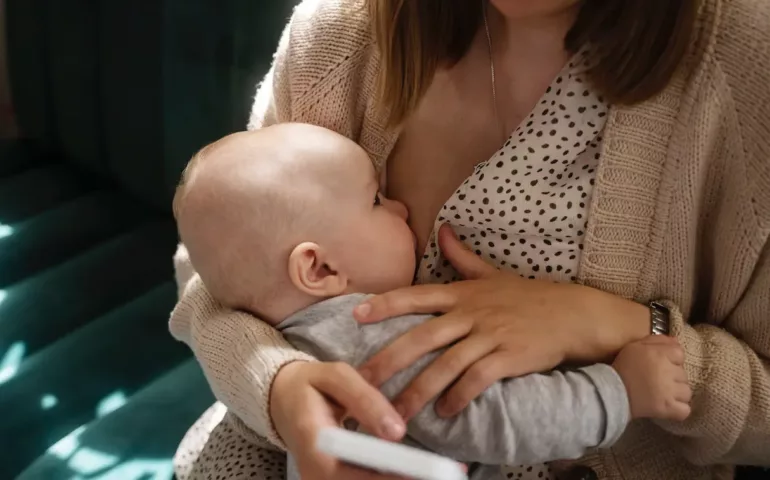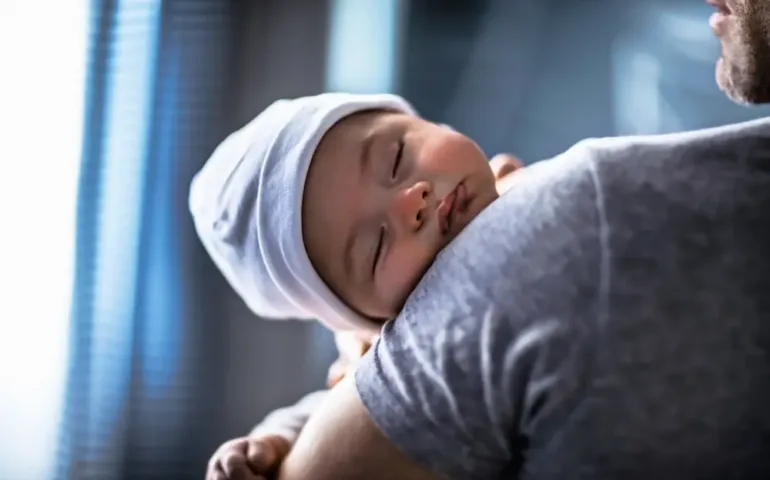
You may have noticed that your infant often has their eyelids closed since birth? That’s because vision is the last of their senses to develop. In 1 year, your child’s eyesight will evolve significantly. What are the month-by-month changes? What is a newborn’s vision like at birth?
Baby’s vision: the complete guide.
Your baby’s vision before birth
During pregnancy, your baby’s vision is barely stimulated, which explains why babies often have their eyes closed at birth. But your baby opens their eyelids for the first time in the womb, usually around the 6th month of pregnancy. They even begin to become sensitive to light a few weeks later! It is also possible that your baby may squint at birth. In fact, their muscles and visual system are still immature since they weren’t stimulated before. But don’t worry, this squint is generally temporary. Your child’s visual abilities will gradually develop over time.
Month-by-month development of a baby’s vision
An infant’s vision gradually evolves throughout their first year of life. Here are the different stages of your child’s visual development during the first 12 months.
At birth
Your newborn sees blurry beyond 30 cm (about 12 inches). They see the world in shades of gray, black, and white. They can recognize the contrasts of your face (eyebrows, eyes, and smile) when you are about 20–25 cm away. They begin to be attracted to light, even if it bothers them a little.
Between 1 and 2 months
They can distinguish red from orange and yellow from green but still cannot see all colors yet. Their visual acuity is gradually developing. They start to focus on objects and follow them from left to right by moving their head. During this stage, it becomes interesting to show them colorful objects.
Between 3 and 4 months
Their color vision improves. They increasingly perceive the details of nearby objects and follow them with their eyes. They show more interest in the expressions of faces around them and their eye coordination improves.
Between 5 and 6 months
Your baby distinguishes light from dark shades. Their vision is coordinated with their movements. They also have a wider visual field, which allows them to grab objects (your child is also developing their motor skills).
Between 7 and 8 months
Your baby develops the ability to follow objects with their eyes. They can grab them and point at them. Games like peek-a-boo (with your face, a toy, or their lovey) help them understand that an object exists even when it’s not visible. This concept is called object permanence. Acquiring this concept also helps your baby better handle moments of separation (work, daycare, babysitter…) and reduces their so-called “fear of abandonment” or “separation anxiety.” However, note that nowadays these terms are considered a bit strong and not fully suited to what your child experiences. Feel free to check out our articles on this subject in the May app.
Between 9 and 10 months
Your child’s eye color is almost permanent. Your baby’s vision becomes close to that of an adult. Their visual field widens, and they can see objects at a distance and recognize them.
From 12 months
Your child’s vision is now more or less similar to that of an adult. They can follow objects and people. They even see things that are far away.
Want to learn more? Feel free to download the May app, where you’ll find plenty of resources to support and guide you throughout your journey as a new parent.
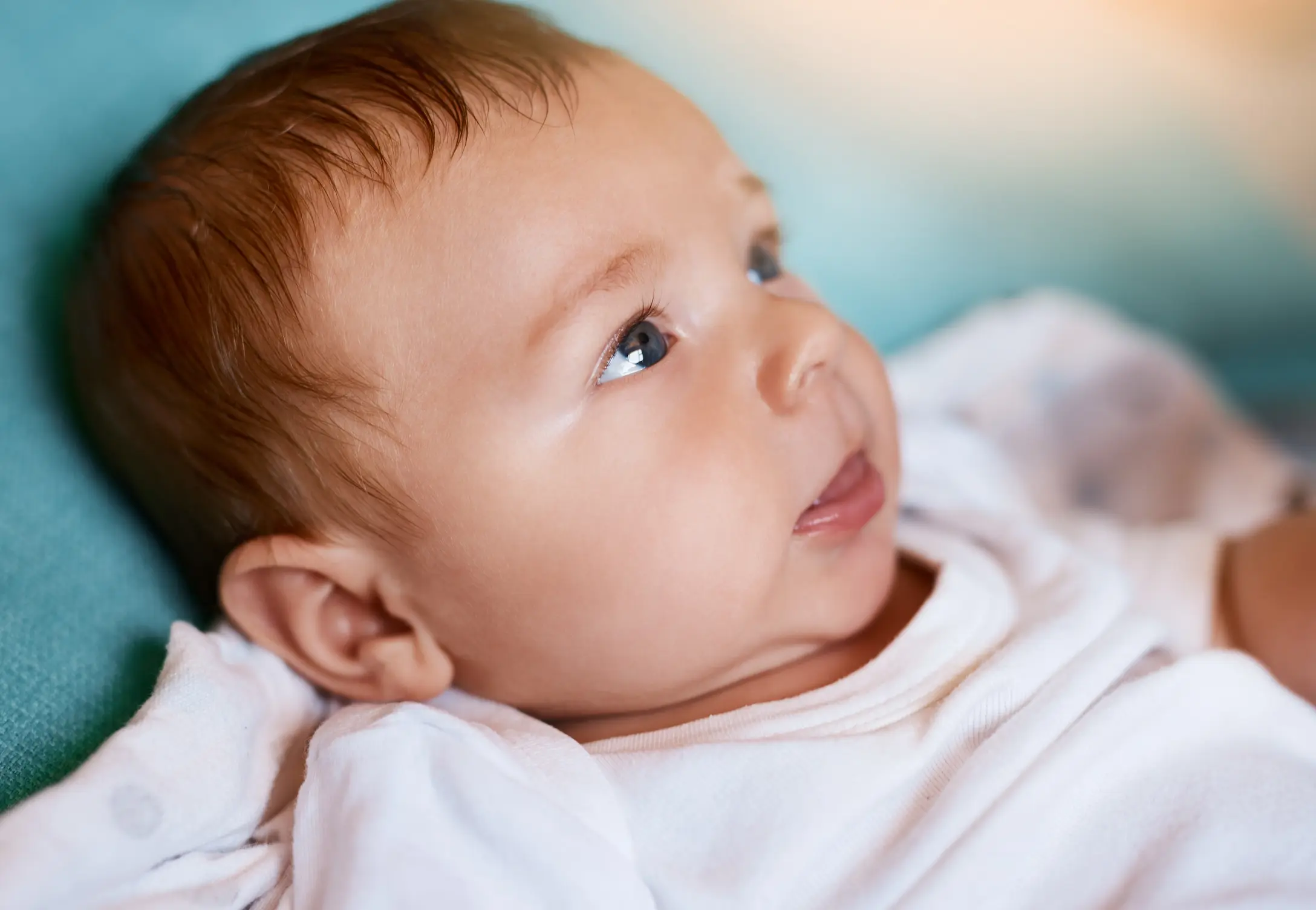
What are the signs of a vision problem in a baby?
Certain signs, when they are recurrent, can alert you to a vision problem in your baby:
- They cry if you cover one of their eyes,
- They squint permanently,
- They do not follow moving objects with their eyes,
- They have increased sensitivity to light and watery eyes,
- They have difficulty orienting themselves,
- They blink frequently.
Vision problems can slow down your baby’s development and make learning other skills (such as walking) more difficult. If you think your child may have a vision disorder, it is recommended to consult an ophthalmologist to perform an eye exam.

Vision disorders in babies: when to consult?
Your child’s first vision test can only be performed starting at 6 months. If you notice one or more of the signs mentioned above, or if you have any concerns about your baby’s vision, it is recommended to consult quickly for the opinion of a healthcare professional.
Good to know: your child’s vision reaches full capacity at around 8 years old. An ophthalmologist can quickly determine if your child is astigmatic (blurred and distorted vision), has myopia (blurred distance vision), hyperopia (blurred near vision), strabismus (misalignment of the eyes affecting vision), or color blindness (a disorder that affects color perception).
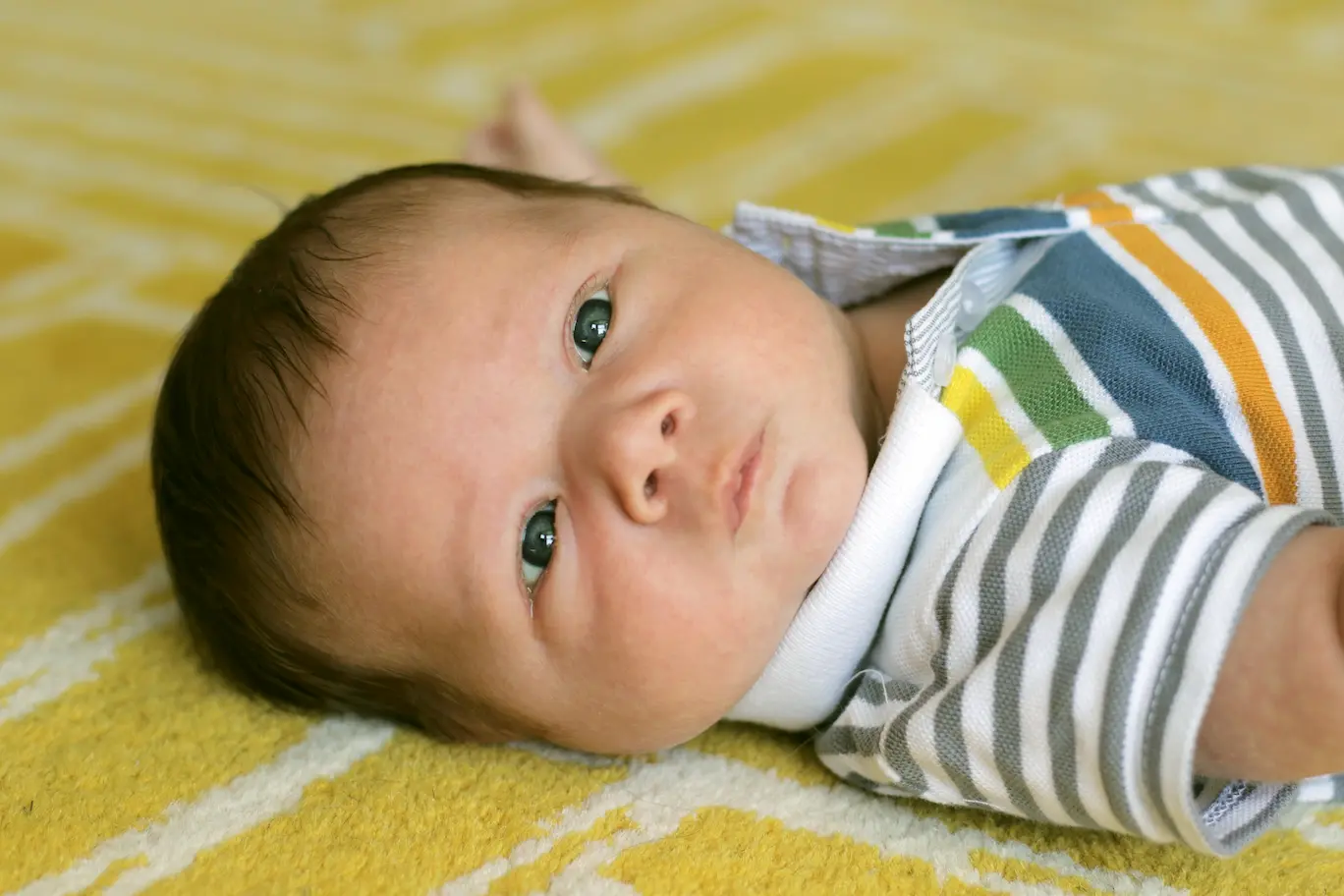
How to clean your baby’s eyes?
Cleaning your baby’s eyes regularly (usually during their daily hygiene routine) ensures that their vision is not obstructed. This cleaning also helps reduce the risk of infections such as conjunctivitis.
To clean your baby’s eyes, it is recommended to soak a gauze pad (clean and lint-free) in saline solution and gently wipe from the inner corner of the eye to the outer corner (from the bridge of the nose toward the cheekbone). Also, remember to wash your hands thoroughly beforehand, as you should each time you care for your child.
Your baby’s vision changes tremendously from birth to 1 year. Make sure to stimulate this sense (by talking close to them, showing them objects, or through activities) so they can fully develop their motor skills, and consult a healthcare professional if you think your baby shows signs of vision problems.
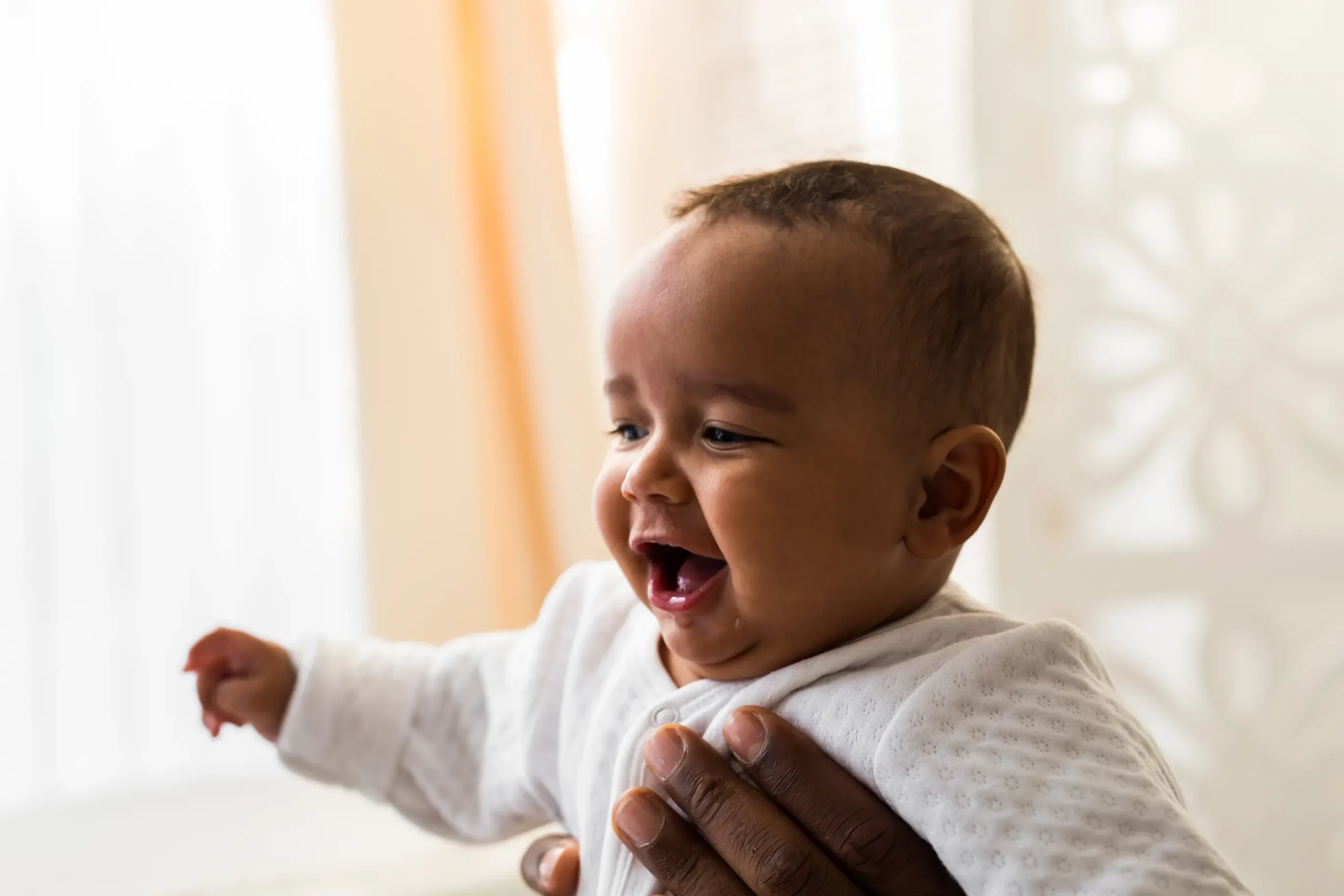
**
Photo credits: Satura_ | nikitavas | YuriArcursPeopleimages | blueplutothegreat
This text was translated from French by an artificial intelligence. The information, advice, and sources it contains comply with French standards and may therefore not apply to your situation. Make sure to complement this reading by visiting the May US/UK app and consulting the healthcare professionals who are supporting you.
